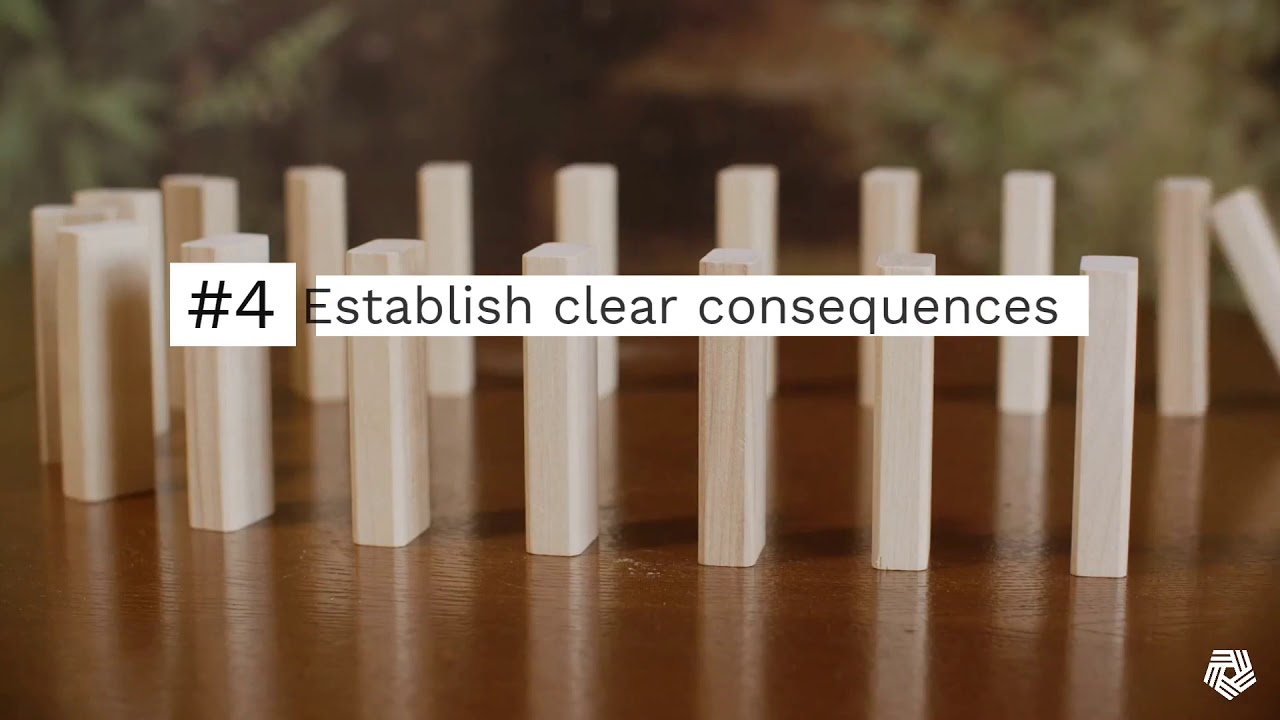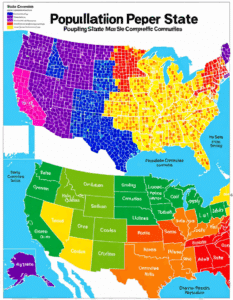The Role of Education in Addiction Prevention
Addiction, a journey laden with challenge and heartache, holds far-reaching implications for individuals, families, and communities. The role of education in addiction prevention cannot be overstated. By integrating substance abuse education at every level, from elementary schools to universities, and by engaging parents and communities, we can build a robust defense against the perils of addiction. At Mothers Against Addiction, our mission is to support parents and guardians navigating the complexities of children’s addictions and advocating for comprehensive educational programs to prevent future cases.
Understanding the Importance of Early Education in Addiction Awareness
Early education in addiction awareness is a cornerstone for reducing future substance abuse risks. Teaching children about the dangers of drugs at a young age creates a strong foundation for resistance. Programs like D.A.R.E. (Drug Abuse Resistance Education) have long been a pivotal part of early education, emphasizing the significance of imparting this knowledge to young minds. Utilizing engaging methods such as storytelling and interactive discussions, children can understand the real-world implications of substance abuse, fostering a mindset that discourages drug use.
The Substance Abuse and Mental Health Services Administration (SAMHSA) and the National Institute on Drug Abuse (NIDA) report that formal early education programs are proven as effective tools for preventing future cases of substance abuse and addiction. When children learn about addiction’s impact through age-appropriate content and compassionate dialogue, they start to develop critical thinking skills and a sense of responsibility regarding their health choices.
Moreover, data from the 2015 National Youth Risk Behavior Survey (YRBS) show that students with higher academic grades are less likely to engage in drug use, such as using marijuana or prescription drugs without a prescription. While this association does not prove causation, it underscores the value of maintaining an informed and engaged educational environment.
| Category | Details |
| Importance of Education | – Empowers individuals with informed decision-making |
| – Identifies early warning signs of addiction | |
| – Provides knowledge on where to seek help and support | |
| Key Educational Programs | – Programs by SAMHSA and NIDA: Proven effective tools for preventing substance abuse |
| Impact of Academic Performance | – Data from the 2015 National Youth Risk Behavior Survey (YRBS) |
| – Students with higher academic grades are less likely to engage in drug use, including marijuana, prescription drugs, and heroin | |
| – Note: Correlation does not imply causation | |
| Talking About Substance Abuse | – Talking about addiction is a highly effective yet underrated prevention method |
| – Important for all age groups, especially college students facing academic and social pressures | |
| Vulnerable Groups | – College students at high risk due to academic and social pressures |
| – Benefit greatly from a supportive and understanding friend or listener | |
| Prevention Strategies | – Formal early education programs |
| – Open conversations and discussions about substances and their risks | |
| – Academic support and counseling services | |
| Sources and Authorities | – Substance Abuse and Mental Health Services Administration (SAMHSA) |
| – National Institute on Drug Abuse (NIDA) |
How High School Curriculums Can Integrate Substance Abuse Education
High school students are particularly vulnerable to the temptations of substance experimentation. As such, incorporating comprehensive substance abuse education into high school curriculums is crucial. Programs that address the physiological and psychological impacts of addiction help teenagers make informed decisions.
Statewide initiatives like New York’s “Health Education Standards” integrate substance abuse topics into mandatory health education courses. By providing factual, well-researched information, students gain a clear understanding of addiction’s consequences. Interactive activities such as role-playing scenarios and peer-led discussions ensure that the material is not just heard but deeply understood. For instance, discussing the life and challenges of individuals such as Joseph Bonanno can offer real-life perspectives that high school students can relate to.
Perhaps the most underrated method of preventing abuse and addiction is by simply talking about it. Creating an environment where students feel safe to ask questions and express their concerns can significantly reduce the anonymity that often accompanies addiction. As educators and guardians, staying informed about resources and recent developments, such as those on www.mothersagainstaddiction.org/peer-pressure-and-addiction, can provide valuable guidance during these conversations.
The Role of Higher Education Institutions in Preventing Addiction
Universities and colleges have a unique role in preventing addiction by promoting mental health and well-being. Institutions like Rutgers University offer initiatives such as the Recovery House program, which provides supportive on-campus housing for students in recovery. This helps create a nurturing environment where students can thrive without the threat of addiction.
Academic pressures and social dynamics make college students vulnerable to substance abuse. By offering workshops, counseling services, and peer support groups, higher education institutions can equip students with tools and knowledge to navigate these challenges. For instance, organizing seminars on harm reduction Strategies, such as the ones highlighted at www.mothersagainstaddiction.org/harm-reduction-strategies, can provide students with practical tips and resources.
Additionally, college campuses can benefit from promoting digital platforms that support mental health. Leveraging online resources from www.mothersagainstaddiction.org/digital-addiction can provide students with accessible, anonymous help at any hour. This proactive approach can deter students from seeking solace in substances during stressful times.
Engaging Parents and Guardians in Addiction Prevention Education
The engagement of parents and guardians is vital in the education of addiction prevention. Programs like the “Parent Action on Drugs” (PAD) initiative have proven effective by equipping parents with the skills to recognize early warning signs of substance abuse and foster open communication with their children. Well-informed parents can create a supportive home environment that reinforces the prevention messages taught in schools.
Open communication about addiction between parents and children can significantly impact a child’s choices. By discussing real-life situations and sharing resources, such as those found on www.mothersagainstaddiction.org, parents can build trust and understanding. This approach ensures that children feel comfortable seeking help if they encounter harmful situations.
Programs focused on parental education can also adapt to the specific dynamics and needs of different communities. Efforts to address cultural sensitivities and unique community challenges can make these programs more relevant and effective, echoing the compassion required to navigate through such tough conversations.
Impact of Community Education Programs on Substance Abuse Awareness
Community education programs are indispensable in creating a unified stance against substance abuse. Non-profits like Shatterproof run impactful campaigns that raise awareness and support those struggling with addiction. They organize outreach events that educate the wider community about addiction’s realities, often partnering with local legislators to promote effective drug policies.
In places such as Petershill Road, community-driven initiatives create significant impact by connecting individuals with support networks and fostering collective resilience. By disseminating research findings and hosting events that engage various community members, these programs help paint a full picture of addiction and its far-reaching effects.
Moreover, community education reinforces the lessons taught in schools and homes. By collaborating with local organizations and healthcare providers, communities can offer comprehensive support systems that address addiction from multiple angles, promoting a holistic approach to prevention and recovery.
The Influence of Social Media Campaigns in Addiction Education
Social media’s reach makes it a powerful tool for addiction education. Campaigns like SAMHSA’s #TalkTheyHearYou effectively engage young people where they spend much of their time—online. These campaigns share compelling content, including stories of recovery, informational videos, and interactive webinars, making the message of prevention widely accessible.
The digital age offers unique opportunities to reach out to younger audiences creatively. Utilizing platforms like Instagram and TikTok, addiction prevention messages can resonate more deeply with a target audience that is both connected and impressionable. Sharing stories of resilience and recovery encourages openness and reduces the stigma associated with addiction.
Moreover, social media campaigns can provide real-time support and foster online communities that offer encouragement and advice. By engaging with digital addiction resources, such as the information available on www.mothersagainstaddiction.org/digital-addiction, individuals can access supportive content that can make a meaningful difference.
Collaboration Between Schools, Communities, and Health Professionals
Collaboration is key to maximizing the impact of addiction prevention efforts. By working together, schools, communities, and health professionals can offer a cohesive approach to education. The “Partnership for Drug-Free Kids” exemplifies this collaborative spirit by working with pediatricians to provide educational resources directly to families.
Bridging the gap between educational institutions and healthcare services ensures that children and adolescents receive consistent and accurate information and support. Such partnerships allow for an integrative approach, leveraging the expertise of various stakeholders to create a more comprehensive prevention strategy.
Health professionals can also play a pivotal role in identifying early signs of substance abuse and providing timely interventions. By facilitating access to resources, such as counseling and rehab programs, we can offer a safety net that catches individuals before they fall into the depths of addiction.
The Importance of Continuous Policy Evaluation and Improvement
Policy evaluation and continuous improvement are crucial for the evolving landscape of addiction prevention. Governments and educational institutions must regularly assess their programs’ effectiveness and incorporate feedback from students, parents, and educators. Adapting successful models from other regions, such as Iceland’s Youth in Europe program, can provide insightful strategies for effective substance abuse prevention.
Constant evaluation ensures that educational content remains relevant and engaging. By staying updated with trends and challenges, we can adapt our approaches to meet the needs of current and future generations. For instance, exploring the latest data on student behaviors and attitudes from reputable studies helps tailor education programs to be more impactful.
Moreover, policies need to be flexible to address emerging threats, such as the rise in digital addiction. By integrating findings from leading experts and organizations, lawmakers can craft policies that adequately address the evolving nature of addiction and substance abuse.
Innovative Approach to a Healthier Future
The multifaceted role of education in addiction prevention underscores the necessity of a proactive, collaborative, and evolving strategy. By starting early with elementary education, integrating substance abuse topics into high school and higher education curricula, engaging families and communities, leveraging social media, fostering collaboration among various stakeholders, and ensuring continuous policy evaluations, we lay the groundwork for a healthier, addiction-free future.
In doing so, we nurture informed, resilient individuals equipped with the knowledge and support systems to make sound decisions and thrive without the shadow of substance abuse. At Mothers Against Addiction, we stand with parents and communities in this collective effort, striving to illuminate a path to recovery and prevention, one informed decision at a time. Together, we can transform the landscape of addiction and inspire a new generation to live free from its grasp.
For more information and resources, visit our website at MothersAgainstAddiction.org.
The Role of Education in Addiction Prevention
Understanding Peer Pressure
Did you know that education can significantly help in resisting peer pressure And addiction? You can read about peer pressure and addiction( to get more insights. By integrating age-appropriate education into schools, children learn about the dangers of substance misuse from an early age. This knowledge empowers them to make informed choices and stand up against peer influences. It’s more than just a lesson plan; it’s a lifeline.
Real-life Applications of Education
Surprisingly, timelines and consistent follow-through can be as crucial in education as they are in other areas of life. For instance, the importance of sticking to a plan and seeing results is akin to knowing what will happen 91 days From today. This approach allows educational programs to build on initial lessons, reinforcing the knowledge to make it stick. Education helps teenagers and preteens develop critical thinking skills and self-awareness, essential tools for avoiding the pitfalls of addiction.
Financial Education’s Role
You might be scratching your head, wondering what home loan rates today have to do with addiction prevention. But here’s the scoop: financial literacy, often part of comprehensive education programs, can actually help mitigate stress—one of the many triggers of substance abuse. When teens understand how to manage money, they’re less likely to turn to substances as a coping mechanism for financial strain. In this sense, a well-rounded education offering can redefine future risks related to addiction.
Cultural Influence and Celebrity Impact
Celebrities have a significant impact on shaping young minds. Imagine the sheer number of hearts that skipped a beat at rumors like Did Sylvester stallone die. Misinformation can easily spread and cause undue stress. Effective education helps combat this by encouraging critical evaluation of information, reducing stress and reliance on harmful substances for coping. Teaching fact-checking methods and encouraging skepticism are small but incredibly important ways education can reduce the risk of addiction.
Education isn’t just about academic achievement; it’s a holistic approach that builds resilient, well-informed individuals. By weaving in trivia and facts, we see how every facet of education works together to prevent addiction and build a brighter future.

What can educators do to prevent drug abuse?
Educators can play a crucial role in preventing drug abuse by integrating substance abuse education into their curriculum, promoting a supportive and understanding environment, and being trained to identify early warning signs of addiction. By fostering open conversations and providing accurate information, teachers can help students make informed choices and know where to seek help if needed.
What is the significance of education in treating addiction and substance use disorders?
Education helps treat addiction and substance use disorders by equipping individuals with knowledge about the dangers of substance abuse, understanding the signs of addiction, and providing access to resources and support systems. Informed individuals are more likely to seek help early and effectively manage their recovery process.
How effective is a school based substance abuse prevention program?
School-based substance abuse prevention programs are highly effective. Studies from organizations like SAMHSA and NIDA show that these formal early education programs significantly reduce the likelihood of future substance abuse and addiction among students.
How does education affect drug abuse?
Education impacts drug abuse by empowering students with the knowledge needed to make informed decisions, recognize the dangers of drugs, and seek help early. Higher academic performance is associated with lower drug use, although this relationship doesn’t imply direct causation.
How can you promote the prevention of drug abuse?
Promoting drug abuse prevention involves having open, honest conversations about the dangers of substance use, encouraging healthy coping mechanisms, and providing education on how to seek help. Community programs, school initiatives, and parental involvement all play vital roles.
What is the most effective drug prevention program?
There’s no one-size-fits-all for the most effective drug prevention program, but those that combine education, skill-building, and community involvement tend to be the most successful. Programs must be comprehensive, addressing various risk factors and providing continuous support.
What is the purpose of drug abuse resistance education?
Drug abuse resistance education aims to equip individuals, especially young people, with the skills and knowledge to resist peer pressure and avoid drug use. It focuses on building self-esteem, making informed decisions, and understanding the consequences of substance abuse.
What educate clients about substance abuse and related behaviors and consequences?
Educating clients about substance abuse involves explaining the physical, emotional, and social consequences of drug use, identifying high-risk situations, and providing strategies to avoid or cope with such situations. It also includes informing them about available resources and support systems.
Why is learning about substance abuse important?
Learning about substance abuse is vital because it helps individuals understand the risks, recognize early signs of addiction, and know when and where to seek help. Education fosters informed decision-making and promotes healthier lifestyles.
Why are school-based prevention programs important?
School-based prevention programs are important because they reach students at a young age, providing them with the knowledge and skills needed to make informed choices. These programs help establish a foundation for healthy behaviors that can last a lifetime.
What are the examples of school-based prevention programs?
Examples of school-based prevention programs include D.A.R.E. (Drug Abuse Resistance Education), Botvin LifeSkills Training, and Project ALERT. These programs focus on building self-esteem, decision-making skills, and providing education on the risks of drug use.
Why are drug prevention programs ineffective?
Drug prevention programs can be ineffective if they are not evidence-based, fail to engage students, or do not address the underlying causes of drug use. Programs must be well-designed, appropriately targeted, and continuously evaluated for effectiveness.
What can you do as a student to prevent drugs?
As a student, you can help prevent drug abuse by staying informed, supporting friends, avoiding peer pressure, and participating in awareness programs. Encouraging open dialogue about the dangers of drug use and knowing where to seek help are also crucial.
What are the 10 ways of preventing drug abuse?
Preventing drug abuse includes staying informed, avoiding peer pressure, practicing healthy coping mechanisms, seeking support, getting involved in extracurricular activities, maintaining strong relationships, setting personal goals, avoiding risky situations, participating in community programs, and advocating for others.
What are five social factors that contribute to substance abuse?
Social factors contributing to substance abuse include peer pressure, family history of addiction, socioeconomic status, exposure to drug use, and lack of social support. These factors can increase vulnerability to starting and continuing substance abuse.
What are the three types of prevention strategies for control of drug abuse?
The three types of prevention strategies for controlling drug abuse are primary prevention (stopping drug use before it starts), secondary prevention (early intervention when signs of use appear), and tertiary prevention (treating addiction to prevent further harm and relapses).
How can we prevent drug abuse in the workplace?
Preventing drug abuse in the workplace involves creating a drug-free policy, providing education on the risks of substance use, offering employee assistance programs, encouraging a supportive environment, and promoting healthy work-life balance.
What are the top protective factors that can keep students from using drugs?
Protective factors that keep students from using drugs include strong family bonds, positive peer relationships, academic success, involvement in extracurricular activities, and having clear goals and aspirations.
When a teacher notices symptoms of drug abuse by a student what is the best approach to the situation?
When a teacher notices symptoms of drug abuse in a student, the best approach is to express concern in a non-judgmental way, provide support, and refer the student to appropriate resources, such as school counselors or addiction specialists, while maintaining confidentiality.




























